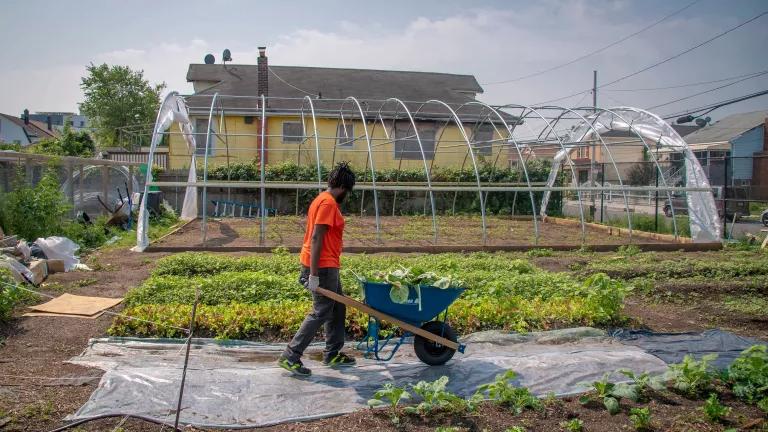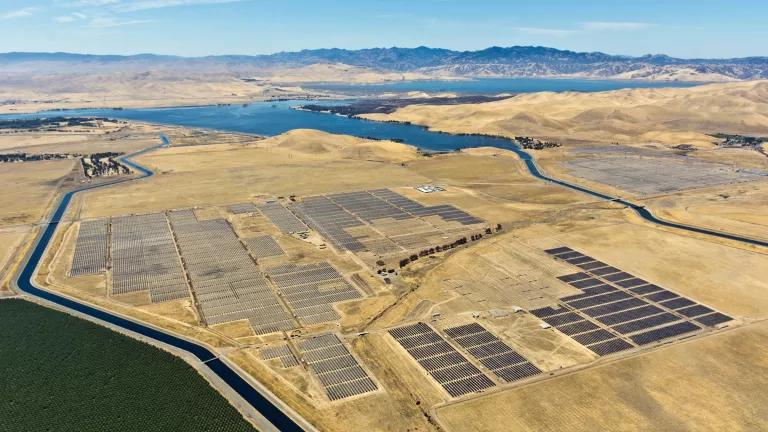House Report: Food & Ag Can Help Solve Climate Crisis
Now is the time to be bold with our action plans and building sustainable systems that support our communities and food systems that protect our climate. Given that food production and agriculture are major contributors to climate change, so, too, can they be part of the climate action plan.

When a national health and economic crisis hits, the food system is one of the first ways many of us feel its impact. The climate change crisis is no exception. Farmers, ranchers, and agricultural workers already have felt the impacts of hotter and drier summers, more intense and frequent precipitation, and other climate-related challenges. We will all continue to experience hardship as long as the climate crisis grows worse.
The House Select Committee on the Climate Crisis recognized the important connections between food, agriculture, and climate change in its report, which was released on June 30. The report lays out several priorities for climate action in food and agriculture, and its recommendations lay the groundwork for even stronger action to make our food and agriculture sector a part of the climate solution. NRDC advocates that moving forward, any climate package should address four critical food system issues: the role of farmers and ranchers as climate stewards, support for underserved farmers, impacts from meat production, and reductions in food waste.
Invest in People and Farming Policies that Care for Our Climate
Investments in climate stewardship are critical to meeting our climate goals and offer a number of important co-benefits, including climate adaptation, enhanced biodiversity, and improved water quality. Reducing reliance on toxic fossil-fuel based pesticides also protects the farmworkers in the fields and rural communities near farms. The report recognizes these benefits by encouraging greater investments in bedrock conservation programs like the Conservation Stewardship Program (CSP) and Environmental Quality Incentives Program (EQIP), innovative approaches like the Soil Health Demonstration Trial and Crop Insurance pilots, and organic agriculture.
Support a Fair and Equitable Food System, and Especially Underserved Farmers
Farmers of color, new farmers, women, and veterans stand ready to lead our food system in a new direction, but these producers have been systematically shut out of many fundamental federal programs. The Farming Opportunities and Training and Outreach program (FOTO) provides resources for socially disadvantaged producers (who have been subjected to racial or ethnic prejudice), veterans, and beginning farmers and ranchers, but the $435 million over 10 years allocated for this program in the last Farm Bill is a drop in the bucket - especially relative to the billions in relief funds set aside for agriculture this year.
Importantly, the report offers a suite of recommendations to support these farmers and their work to rebuild our food system, with an eye to climate resilience and equity. NRDC agrees that this robust and systematic investment must be central to our climate strategies. Indeed, we recommend more funding to pay underserved producers for their climate stewardship, offer scale-, location-, and culturally appropriate technical assistance, increase access to land, tools, and business services, and ensure that farming and farm work pay living wages.
Address Meat Production’s Carbon Emissions
As the Report notes, about 40% of agriculture’s contributions to greenhouse gas emissions come from livestock and feed production, so the livestock sector must play a critical role in fighting climate change. The report identifies support for grazing practices that build healthy soil as an important opportunity, because carefully managed grazing can simultaneously reduce emissions, improve biodiversity, and help producers survive in a changing climate. In addition, our country’s industrial scale of meat production—reliant on CAFOs, or confined animal feeding operations—has resulted in a system that causes chronic health and environmental problems for rural communities. This industrialized meat production system needs to be replaced by more holistic policies that support worker health, air and water quality, animals, and ultimately, the climate. We should also be supporting climate-friendly food purchases and production of low-carbon foods such as legumes. Policies to encourage these shifts have already been adopted at the local and community levels, such as New York City’s pledge to cut municipal beef purchases by 50% over five years.
Reduce Food Waste
Another critical component solution to the climate crisis is reducing food waste, which, fortunately, has gotten a lot of attention recently. Up to 40% of food in the U.S. and 30% of food globally, is never eaten. It is left in the fields unharvested or is purchased and never eaten. When food goes to waste, the energy and other resources that go into producing, transporting, processing, and storing it also are wasted. To reduce waste and provide food where it’s needed, we can be creating and supporting stronger links between regional foodsheds and providers and institutional food buyers (like schools, community food banks, and health providers). In addition, shorter supply chains that circulate money and food in local economies will help communities survive periods of turmoil, like extreme weather events and health crises. NRDC supports the report’s recommendations to build local and regional food systems by expanding market opportunities and partnerships, which will help reduce food waste by strengthening local and regional supply chains, and to increase support and investments in food waste reduction strategies across the supply chain, including the federal Winning on Food Waste initiative.
Now is the time to be bold with our action plans and building sustainable systems that support our communities and food systems that protect our climate. Given that food production and agriculture are major contributors to climate change, so, too, can they be part of the climate action plan. Investments that engage the food and agriculture sector as partners in solving the climate crisis will help ensure a just, sustainable, resilient, and healthy environment and food system for the future.






